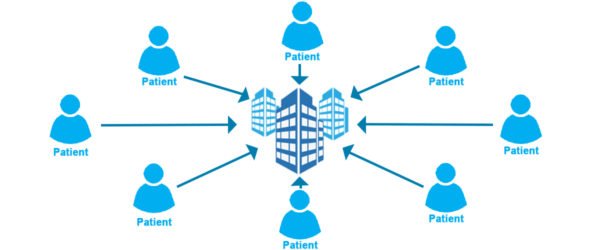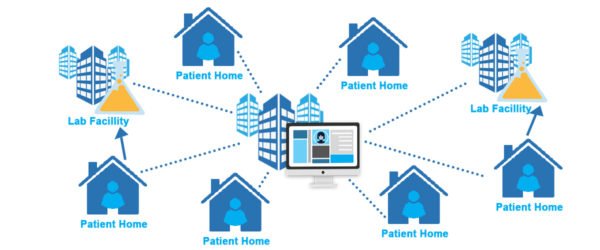It was early January 2025. I was two days into a three-day weekend hackathon-turned-nightmare that somehow spiraled into a full-blown decentralized clinical trial platform project. Yep, a platform—for real patients, real trial data, and real regulatory stakes.
The stack? Corda for the blockchain backend, Vue.js for the front. Seemed solid on paper. Looked sexy in the proposal deck. But building it? Not quite the Pinterest board dream we imagined.
Why Decentralized Clinical, Though?

If you’ve ever peeked into the world of clinical trials, you know how sticky the whole thing is—centralized servers holding patient records, lack of transparency, nightmare data reconciliation between stakeholders, and don’t get me started on compliance.
So yeah, decentralization made sense. We weren’t trying to tokenize people’s blood pressure or mint NFTs out of medical records (I mean, not yet). We just wanted to:
- Give patients control of their data
- Make the process auditable
- Build trust—without forcing anyone to trust us
Corda was our go-to because it’s not your average crypto-bro chain. No flashy tokens. No gas fees. Just serious, privacy-focused ledger tech built for enterprise. It felt like the grown-up in the room. And that’s exactly what clinical research needed.
The First Wall: Identity and Privacy in Decentralized Clinical Trials
I vividly remember sipping on my fourth black coffee when our first “oh crap” moment hit:
How do you give patients control of their data… without exposing who they are?
In Corda, identities aren’t anonymous by default. You know who you’re talking to. That’s great for finance. Not so great for people sharing sensitive trial data like genetic test results or side-effect logs.
We had to dive deep into Corda’s confidential identities. And trust me, it’s not plug-and-play. We ended up designing a system where patients were represented by temporary, rotating identifiers. Only approved parties (like doctors or auditors) could see the real deal—under strict conditions.
It was messy. It took days. But when we ran our first test transaction and saw a trial entry appear on-chain with zero trace of personal data, it felt like a small miracle.
Vue.js: The Unexpected Savior in Decentralized Clinical Platforms
Look, I’ve always been more of a backend brain. APIs? Yes. Ledgers? Fun. Frontends? Please, no.
But I had to get over that fast. Our clinical dashboard had to be usable. Not just “eh, it works if you squint.” I’m talking:
- Nurses-on-tablets usable
- Patients-without-tech-backgrounds usable
Vue.js surprised me. It was intuitive, flexible, and fast enough that I didn’t throw my laptop across the room (unlike certain other frontend frameworks I shall not name). What helped the most? The component-based structure. We could build:
- Cards for trial data
- Charts for side effect logs
- Input flows for consent collection
All modular. All reusable.
One late night, I stayed up sketching out a drag-and-drop-style participant dashboard. Next morning, half-asleep, I built a prototype. It worked. Kind of. But the point is—it felt doable. Like, human doable. Not ivory tower coding.
Real People. Real Data. Real Pressure.
I’ll never forget the Zoom call with an oncologist who tested our MVP.
She asked:
“So, if the patient revokes consent mid-trial, what happens to their data already on-chain?”
Silence.
That’s when it hit us—we weren’t just building tech. We were building policy. Ethical guardrails.
You can’t erase blockchain records. But you can design systems that flag data as invalid or withdrawn, and prevent it from being used in analysis.
We baked that logic into our trial flows. Painstakingly. It wasn’t glamorous. It was necessary.
Same goes for audit logs. Pharma regulators aren’t impressed by “well, the node crashed but trust us, it was fine.” They want traceability. Every click. Every consent toggle. Logged. Tamper-proof. Searchable.
Corda helped here. It felt like we were building a journal that wrote itself—and couldn’t be rewritten. That alone felt like a win.
The Politics of the Platform
This part sucked.
Getting buy-in from stakeholders? Ugh. You’d think “secure, transparent, patient-first” would sell itself.
Nope.
- Hospitals didn’t want to run their own nodes
- Sponsors freaked out over “decentralized” sounding too crypto
- Patients? Some were thrilled. Some confused. Some rightfully skeptical
So, we compromised.
We built tiers:
- Light participation for patients (just mobile dashboards, no nodes)
- Heavier permissions for clinicians
- Dedicated nodes for trial sponsors
Every participant had a role, a voice, a control level. It wasn’t elegant—but it worked.
What We Learned
- Patients care about transparency more than tech.
Our most-used feature? A simple “Who accessed my data and why?” button. - Frontends are empathy tools.
Good UX made everything feel safer. A warm dashboard does more than cold encryption docs ever will. - Blockchain isn’t magic.
It won’t fix trust. It won’t make you compliant by default. But it gives you a solid spine—if you architect it right. - Vue.js made us faster.
We shipped iterations quickly. We demoed often. Stakeholders saw progress, not promises.
If You’re Thinking of Building Something Similar…
Be patient. And kind to yourself.
There’s a weird joy in solving a problem that really matters. But it comes with frustration, uncertainty, and a lot of “should we even be doing this?” moments.
That’s okay. That means you’re building something new.
- Lean on frameworks like Corda that understand enterprise-grade complexity
- Use frontend tools like Vue that let you focus on people, not plumbing
- And above all—talk to the humans you’re building for
Their lives are messy—just like your code.
Conclusion
We didn’t change the world.
But maybe:
- One patient saw where their data went
- One researcher got audit logs without tears
- One regulator slept better knowing records weren’t editable
That’s enough for now.
If you’re in the weeds with your own platform, pushing pixels, debugging contracts, wondering if this matters—it does.
Read our more blogs –Building a Decentralized Art Curation Platform with Flow and React



Pingback: Solana & Vue.js for Decentralized Code Bounties